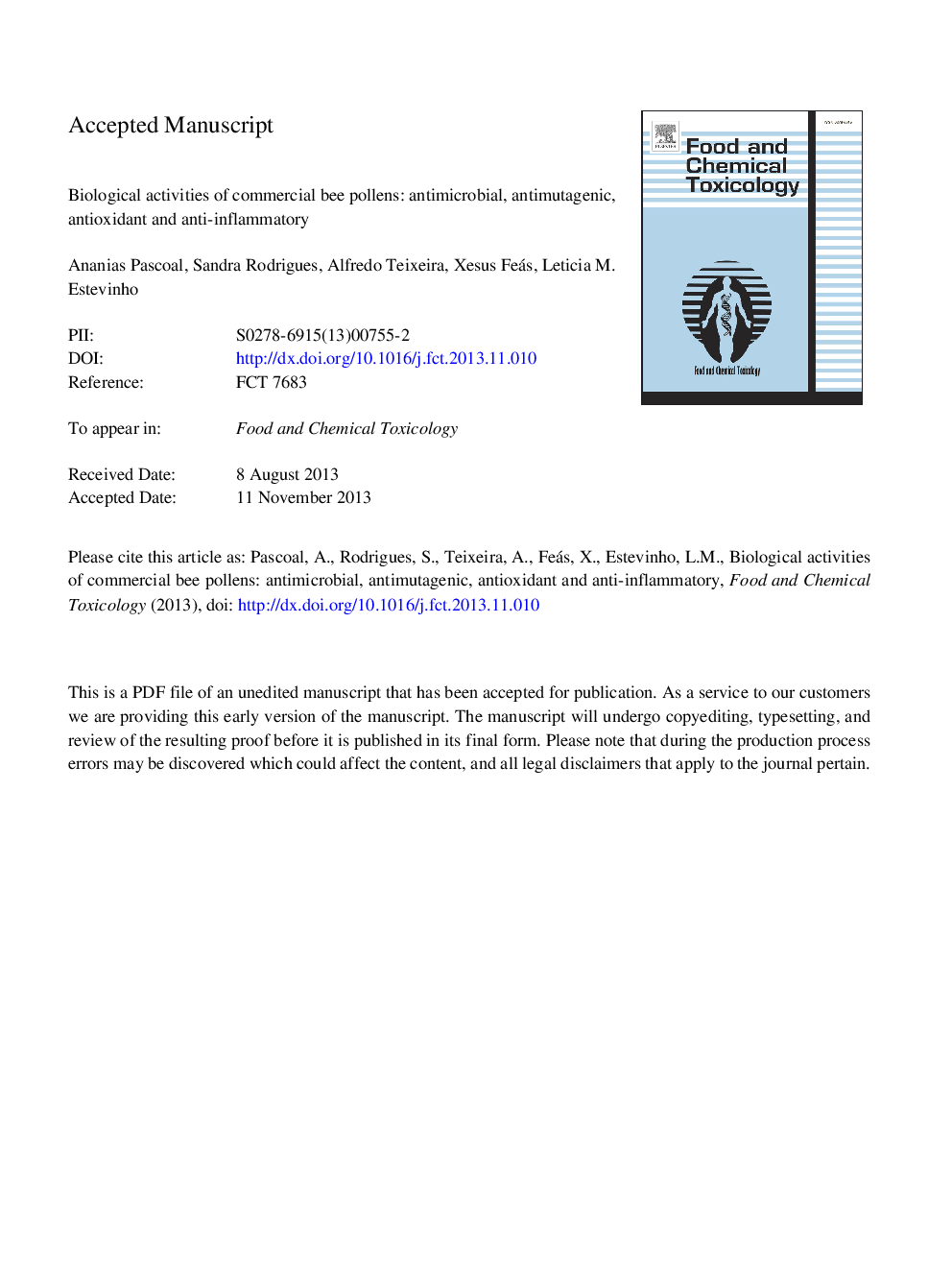| Article ID | Journal | Published Year | Pages | File Type |
|---|---|---|---|---|
| 5850849 | Food and Chemical Toxicology | 2014 | 32 Pages |
Abstract
Bee pollen is considered, since memorable times, a good source of nourishing substances and energy. The present study aimed to evaluate the biological activities of eight commercial bee pollens purchased from the market. The origin of sample A was not specified in the labeling; samples B, C, D and G were from Portugal and the remaining were from Spain. The sample E presented the highest value of phenolics (32.15 ± 2.12 mg/g) and the H the lowest (18.55 ± 095 mg/g). Sample C had the highest value of flavonoids (10.14 ± 1.57 mg/g) and sample H the lowest (3.92 ± 0.68 mg/g). All the samples exhibited antimicrobial activity, being Staphylococcus aureus the most sensitive and Candida glabrata the most resistant of the microorganisms studied. All the samples exhibited antimutagenic activity, even though some samples were more effective in decreasing the number of gene conversion colonies and mutant colonies. Regarding the antioxidant activity, assessed using two methods, the more effective was sample B. The anti-inflammatory activity, assessed using the hyaluronidase enzyme, was highest in samples B and D. Pearson's correlation coefficients between polyphenols, flavonoids, antioxidant activity and antimicrobial activity were computed. It was also performed a discriminant analysis.
Keywords
Related Topics
Life Sciences
Agricultural and Biological Sciences
Food Science
Authors
Ananias Pascoal, Sandra Rodrigues, Alfredo Teixeira, Xesus Feás, Leticia M. Estevinho,
